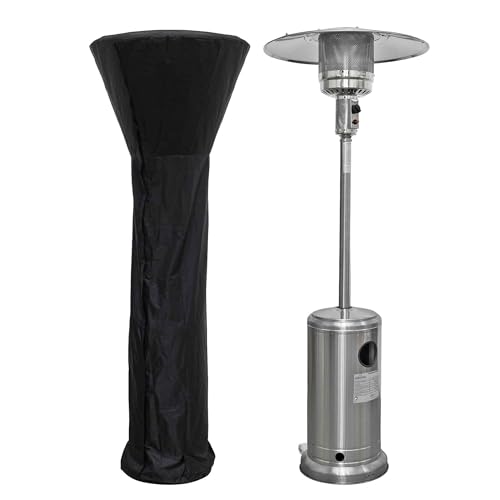Five People You Should Know In The Gas Patio Heaters Industry
The Comprehensive Guide to Gas Patio Heaters
As outdoor living ends up being significantly popular, gas patio heaters have emerged as a necessary element for extending the outdoor amusing season. Whether for a cozy night with good friends or a vibrant household gathering, these heaters supply warmth and comfort that can change any outdoor space. This short article explores the various aspects of gas patio heaters, including their types, benefits, operational mechanics, upkeep suggestions, and considerations for purchasing one.
What is a Gas Patio Heater?
A gas patio heater is a kind of heating appliance created specifically for outdoor usage. Typically fueled by propane or gas, these heaters produce heat to fight the chill of the night air, permitting outdoor social activities to continue even under cooler temperature levels.
Kinds Of Gas Patio Heaters
Gas patio heaters can be found in a number of different designs, each suited for various needs and aesthetics. The typical types include:
Freestanding Heaters:
- These are the most typical type and are usually tall, with a wide base and a heater component at the top.
- They can easily be walked around and are ideal for various outdoor settings.
Tabletop Heaters:
- Smaller and more compact, tabletop heaters are designed to rest on tables or other surface areas.
- They offer heat for smaller sized areas and are usually easier to store.
Wall-Mounted Heaters:
- These are repaired to a wall and are a terrific choice for patio areas with minimal space.
- They use a more permanent heating service and can complement outdoor decoration.
Patio Fire Pits:
- While not solely heaters, gas fire pits provide warmth and ambiance at the same time.
- They can function as a centerpiece for outdoor events.
Heater Type
Description
Best For
Freestanding
Tall, mobile units with a heating element on the top
Large open locations
Tabletop
Compact designs ideal for table surface areas
Little events
Wall-Mounted
Fixed units offering constant warmth
Smaller sized patio areas
Patio Fire Pits
Combined heating and ornamental feature
Ambiance and warmth
Advantages of Gas Patio Heaters
Investing in a gas patio heater uses numerous benefits:
- Extended Outdoor Enjoyment: Gas heaters permit house owners to enjoy their patio areas even throughout chillier months.
- Quick Heating Capability: Gas heaters heat up rapidly, offering instant relief from the chill.
- User-Friendly Operation: Most gas heaters feature basic ignition controls for ease of use.
- Aesthetic Appeal: Many gas heaters are created to be aesthetically attractive, improving the overall appearance of your outdoor space.
- Versatile Fuel Options: Availability of both propane and gas models caters to different requirements and choices.
Functional Mechanics
Gas patio heaters run by transforming fuel into convected heat. Here's a streamlined breakdown of how they work:
- Fuel Source: Most gas heaters use propane or gas. The type of fuel affects efficiency and availability.
- Ignition System: Most designs include either a manual ignition (using a lighter or match) or an electronic ignition (push-button).
- Heating Element: Once fired up, gas streams through a burner, where it is combusted to create heat. Convected heat spreads from the heating element.
- Heat Diffuser: Some heaters have a reflector to assist distribute warmth more evenly across a broader area.
Fuel Comparison
Fuel Type
Pros
Cons
Propane
Portable, extensively offered
Needs tank replacement/refill
Natural Gas
Cost-efficient if connected to a supply
Setup more complex
Maintenance Tips for Gas Patio Heaters
Correct care will extend the life of gas patio heaters. Here are some important maintenance pointers:
- Regular Cleaning: Keep the heater tidy from dirt and particles. Routinely clean down the surface areas.
- Inspect Gas Supply Lines: Check for leaks or cracks in the gas lines. Use Alfresco Heating to find leakages by observing bubbles.
- Seasonal Checks: Before the usage of a heater, inspect all components and repair work or change any broken parts.
- Storage: During off-seasons, store the heater in a dry place or cover it for protection.
- Expert Servicing: Consider an expert check-up every year, especially for natural gas models.
Factors to consider When Purchasing a Gas Patio Heater
When choosing a gas patio heater, keep the list below factors in mind:
- Heating Capacity:
- Measured in BTUs, a greater BTU score provides more heat.
- Size and Weight:
- Depending on the space available and whether the heater requires to be portable.
- Product:
- Stainless steel heaters provide sturdiness and resistance to rust and rust.
- Design:
- Choose a style that complements your outdoor decor.
- Safety Features:
- Look for automated shut-off functions or safety tilt valves to avoid accidents.
FAQs
Q: Are gas patio heaters safe to use?A: Yes
, when used according to the maker's instructions and safety guidelines, gas patio heaters are safe. Constantly guarantee proper ventilation.
Q: How long can one propane tank last?A: A basic 20 pound
propane tank can last anywhere from 8 to 30 hours, depending upon the heat setting. Q: Can gas patio heaters be used indoors?A: No,
**gas patio heaters are designed for outdoor use just due to the threat of carbon monoxide buildup in enclosed areas. Q: Do gas patio heaters need assembly?A: Most freestanding designs need standard assembly
, while tabletop and wall-mounted options might require more
specific assembly. Gas patio heaters are an appealing solution for those seeking to enhance their outdoor experiences throughout the year.
By understanding the different types, benefits, and functional mechanics, possible purchasers can make informed choices that line up with their requirements. Appropriate upkeep and safety factors to consider will ensure that these heaters stay reliable and safe, offering comfort to outdoor events for many seasons to come. With cautious selection and care, a gas patio heater can become a precious addition to any outdoor living space.  **
**